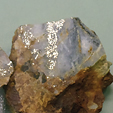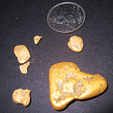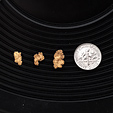Prospecting & Detecting
PLP Update: How to Restore The Rights of Suction Dredge Miners
September 2019 by Scott Harn
The Army Corps of Engineers is tasked with regulating discharges of dredge and fill material from waterways under Section 404 of the Clean Water Act (CWA).
The EPA is granted authority to regulate activities in waterways when there is the “addition” of a pollutant under Section 402 of the Clean Water Act.
In Eastern Oregon Mining Association v. Oregon Department of Environmental Quality, the miners argued that only the Army Corps has authority under the CWA to permit the discharge of materials resulting from suction dredging because there is no “addition” of a pollutant that would trigger the EPA Section 402 permit.
On July 25, 2019, the Oregon Supreme Court ruled against the miners in this case, but left the door wide open for a challenge. The Oregon Supreme Court stated, “...the regulations do not resolve whether the discharges resulting from suction dredge mining constitute a pollutant subject to section 402 or dredged material subject to section 404. Both the statutes and the regulations are genuinely ambiguous on that question.”
The court concluded that because of this ambiguity, Chevron deference applies and the agencies are entitled to interpret the regulations as they see fit in this instance. (See Chevron v. Natural Resources Defense Council, 468 U.S. 837 (1984).)
Justice Balmer wrote a dissenting opinion in this case, arguing that Chevron deference should not apply and “incidental fallback” of dredge material also needs to be clarified by the agencies.
The Waldo Mining Association intervened in the case and is working with Pacific Legal Foundation on a possible appeal to the US Supreme Court.
The Eastern Oregon Mining Association, Waldo Mining Association, Galice Mining District, and several additional mining organizations—including Public Lands for the People—already submitted a petition for rulemaking to Secretary Bernhardt at the Dept. of Interior (DOI) and Secretary Perdue at the Dept. of Agriculture (USDA) regarding federal preemption, which should apply on federal mining claims and prevent states like California, Idaho, Oregon and Washington from prohibiting mining on federal lands. This petition for rulemaking was submitted on July 18, 2019.
California was granted authority to issue Section 402 EPA permits through a memorandum of understanding with the federal government after the state met certain requirements. Suction dredgers have been out of work for about ten years after the state came up with a scheme to require permits but refused to issue them.
The suction dredge miners filed several lawsuits against California in an attempt to restore their right to dredge. The cases were consolidated. Judge Ochoa of San Bernardino Superior Court appeared to be leaning in favor of the miners, but then ruled against them on several points after he had been summoned to Sacramento for a meeting. However, there was a strong chance the miners were going to win on a crucial point that would have tossed out the overly restrictive (2012) regulations. The Western Mining Alliance and Public Lands for the People were still in the fight.
We tried to warn miners against working with the California State Water Board. All the board members were appointed by former Governor Brown, and he made his position clear—that he would do whatever he could to block dredging in California. Brown stacked the Water Board with members of various environmental groups. (Governor Newsome has continued to utilize Water Board members who are members of various environmental activist groups.) Still, some mining organizations decided to withdraw their funding and support from the ongoing lawsuit and focus on working with the Water Board. Unfortunately, without the funds necessary to pay the legal bills, Public Lands for the People and the Western Mining Alliance could not continue the lawsuit and were forced to settle with the State of California.
There is a chance the California State Water Resources Control Board will have some type of dredging permit system ready in another year or two, but the restrictions, reporting requirements and fees will make dredging for gold in California impracticable and uneconomical. That is exactly what they are intent on doing to keep dredgers from working their federal mining claims. And when that permit becomes available, dredgers would have to (falsely) state they are discharging a pollutant just to obtain the permit!
Here Is How We Fix It
A two-pronged approach is necessary to restore suction dredging; federal preemption needs to be established as addressed above via petition; and clarification from the EPA is needed to establish that no Section 402 permit is necessary when there is no “addition” of a pollutant.
PLP worked with suction dredge miner Don Smith of Idaho.
Smith received a letter from Cindy Godsey, an EPA Region 10 environmental engineer, claiming his proposed suction dredging operation in Idaho may need a Section 402 permit because “EPA is required to regulate the discharge of a pollutant from a point source...” To make her case, Godsey includes a low-level decision by an administrative law judge.
PLP assisted Smith in writing his appeal and included the petition for rulemaking addressed to EPA Region 10 administrator Chris Hladick.
The appeal cites several court rulings that trump those used to deny the miners in the Oregon case and the cases quoted by Cindy Godsey in her letter to Smith.
In S.D. Warren Co. v. Maine Board of Environmental Protection, the US Supreme Court explained, “[T]he National Pollutant Discharge Elimination System [requires] a permit for the ‘discharge of any pollutant’ into the navigable waters of the United States, 33 U.S.C. § 1342(a). The triggering statutory term here is not the word ‘discharge’ alone, but ‘discharge of a pollutant,’ a phrase made narrower by its specific definition requiring an ‘addition’ of a pollutant to the water.”
In National Pork Producers v. EPA, the court concluded, “...in the absence of an actual addition of any pollutant to navigable waters from any point, there is no point source discharge, no statutory violation, no statutory obligation of point sources to comply with EPA regulations for point source discharges, and no statutory obligation of point sources to seek or obtain an NPDES permit in the first instance.” (Emphasis added.)
The National Pork Producers case was a multi-circuit federal decision, which included the Second Circuit Court and the 9th Circuit Court of Appeals.
Due to space limitations, we cannot print the entire five-page appeal and petition for rulemaking. However, we are including a link to it here along with links to each of the court cases mentioned above.
Smith’s appeal and petition for rulemaking was submitted on August 12, 2019, and several mining organizations are sending in letters to encourage the Trump administration to take action on these petitions.
I also want to point out that the current administration has been very open to working through these issues. In just the past three weeks, I’ve participated in three conference calls with deputy secretaries at federal agencies in Washington, DC, including the Department of Interior and Fish & Wildlife.
With persistence and the right game plan, I’m confident we will get the rights of suction dredgers and other miners restored.
Prospecting and Mining Old Mine Sites
 In some places valuable ores can be found within the waste material of mine dumps, sorted ore piles, and detrital vein matter at the surface. Though many of these old mine sites can be an excellent source of gold, not all are created equal.
In some places valuable ores can be found within the waste material of mine dumps, sorted ore piles, and detrital vein matter at the surface. Though many of these old mine sites can be an excellent source of gold, not all are created equal.
Follow Up to "Just One More Time"
 …the “One More Time” has turned into three more trips and each of the three has yielded more gold each time down.
…the “One More Time” has turned into three more trips and each of the three has yielded more gold each time down.
Who Says You Have to Own a Claim to Find Gold?
 Most of us know making a profit as a small-scale miner is difficult; however, sometimes we combine luck with a little skill and bring home a few ounces of the yellow stuff.
Most of us know making a profit as a small-scale miner is difficult; however, sometimes we combine luck with a little skill and bring home a few ounces of the yellow stuff.
Give That Club Claim A Chance
 My first trip to the claim was the tip-off that there might be larger gold to be found. I brought my puffer drywasher and my dad to a local prospecting club outing that was held at the claim.
My first trip to the claim was the tip-off that there might be larger gold to be found. I brought my puffer drywasher and my dad to a local prospecting club outing that was held at the claim.A Father and Son Prospecting Adventure
As I write this, I am still on a rush from taking my 9-year-old son, Jeffrey, prospecting for the first time this past weekend. It’s not that he hasn’t been along on numerous outings before: this is the first time that just the two of us went out for a day of drywashing and detecting under the desert sun.
Ask The Experts
Can a metal detector be used to find limonitic gossan material?
Subscription Required:
The Bawl Mill
• Ask The Experts - How do I remove the silvery-white coating from my gold?
• Ask The Experts - Is it possible to mine glacial moraine placer deposits?
• Ask The Experts - Why are some valid mining claims missing from apps when researching land status?
• Ask The Experts - Is using a drywasher legal in California
• A High Country Patch
• An Update On The Father's Day Gold Discovery
• Exploring The Historic Rand Mining District, Southern California
• Disturbing Trend: Federal Judges Disregard Mining Laws
• My First Carolina Nugget
• How to Refine Silver—Pt I
• Step-by-Step Crevicing
• Melman on Gold & Silver
• Mom Finds 3.72-Carat Yellow Diamond
• Mining Stock Quotes and Mineral & Metal Prices









